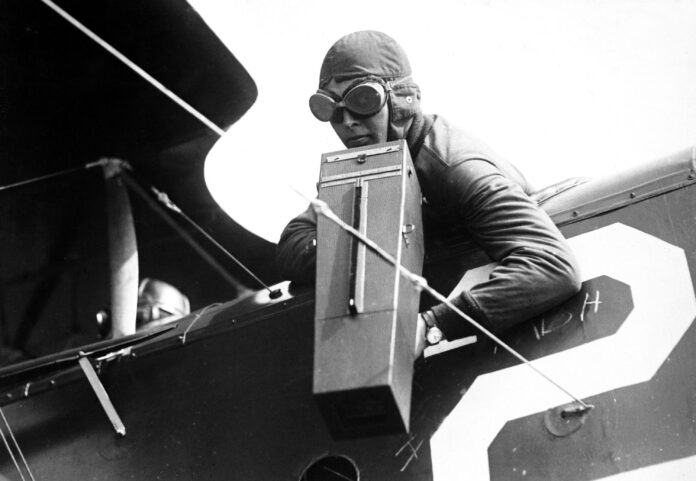Amid the tumultuous backdrop of the World War I, where nations clashed on the ground, a new battleground emerged in the skies above. Aerial combat and reconnaissance became the theater where pioneering aviators showcased their courage and skill, forever changing the course of warfare. Join us as we embark on a journey into the heart of World War I aviation, unraveling the tales of aerial combat and reconnaissance that defined an era of innovation and valor.
The Dawn of Aerial Warfare: A New Dimension of Conflict
As the world plunged into the depths of World War I, the potential of aviation was rapidly realized. Aircraft, once viewed as novelties, took on pivotal roles in military operations. The skies transformed into a dynamic arena where aviators engaged in dogfights, reconnaissance missions, and aerial duels that would shape the future of warfare.
From Observation to Offense: Reconnaissance Takes Flight
In the early stages of the war, aircraft were primarily employed for reconnaissance purposes. Pilots ventured into the skies to gather critical intelligence on enemy troop movements, positions, and supply lines. These brave aviators risked their lives to capture photographs and sketches that provided invaluable insights to military commanders on the ground.
The Evolution of Fighter Aircraft: Birth of Aerial Combat
As reconnaissance aircraft patrolled the skies, the need for defense became apparent. Soon, aviators armed their aircraft with rifles, pistols, and even grenades, leading to the birth of aerial combat. These early dogfights were marked by daring maneuvers and aerial duels as pilots sought to gain the upper hand and secure dominance in the skies.
Famous Aces: Legends of the Sky
World War I produced legendary figures known as “aces” – pilots who demonstrated exceptional skill and courage in aerial combat. Aces such as Manfred von Richthofen, also known as the Red Baron, and Eddie Rickenbacker became symbols of heroism and achievement. Their exploits in the skies captured the imagination of the public and earned them a place in history.
The Fighter Aircraft Arms Race
The emergence of fighter aircraft marked the beginning of an arms race in aviation technology. Designers sought to create aircraft that were faster, more maneuverable, and better armed. The introduction of machine guns synchronized with the propeller’s rotation allowed pilots to fire directly in front of the aircraft, increasing the effectiveness of aerial attacks.
Aerial Tactics and Strategies: The Birth of Aerial Maneuvers
Aerial combat required the development of new tactics and strategies. Pilots learned to execute barrel rolls, split S maneuvers, and loops to gain advantage over their opponents. Dogfighting became a ballet of skill and precision as aviators mastered these maneuvers to outwit and outmaneuver their adversaries.
The Role of Observation Balloons: Vulnerable Yet Vital
In addition to aerial combat, reconnaissance aircraft faced another challenge – enemy observation balloons. These tethered balloons provided a vantage point from which enemy forces could spot troop movements and relay information to ground artillery. Aircraft were tasked with attacking and destroying these observation balloons, often at great risk due to anti-aircraft fire.
The Birth of Fighter Aces: Fame and Tragedy in the Skies
The rise of fighter aces brought both fame and tragedy. While some aces achieved celebrity status and accolades, many paid the ultimate price. The dangers of aerial combat, coupled with the technological limitations of the time, meant that survival was far from guaranteed. The stories of these aviators reflect the brutal reality of war in the skies.
The Legacy of World War I Aviation
World War I aviation laid the foundation for the development of modern aerial warfare. The lessons learned from aerial combat and reconnaissance shaped military strategies, tactics, and aircraft design for decades to come. The courage and innovation displayed by aviators during this era paved the way for future generations of pilots and influenced the trajectory of aviation history.
Aviation’s Transformation: Catalyst for Future Innovations
The experiences of World War I aviators fueled advancements in aviation technology. Lessons from aerial combat led to the refinement of fighter aircraft, the development of better armaments, and the exploration of tactics that would be refined in subsequent conflicts. The experiences of these early aviators paved the way for the aviation innovations of the 20th century.
Remembering Their Sacrifice: A Legacy in the Skies
As time marches forward, the legacy of World War I aviation lives on. The stories of these aviators, their feats of courage, and their contributions to the evolution of aerial combat and reconnaissance continue to inspire. Their sacrifices serve as a reminder of the transformative power of aviation and the indomitable spirit of those who took to the skies in the name of valor.
Conclusion: Wings of Valor
The pages of history are adorned with the tales of World War I aviators who soared into the unknown skies, confronting challenges that tested their mettle and redefined the limits of human achievement. Aerial combat and reconnaissance became the crucible where innovation met courage, birthing legends and shaping the destiny of aviation. As we look back at the echoes of valor that resonate through the ages, we pay tribute to those who dared to venture into the blue expanse and etched their names into the annals of aviation history.
























